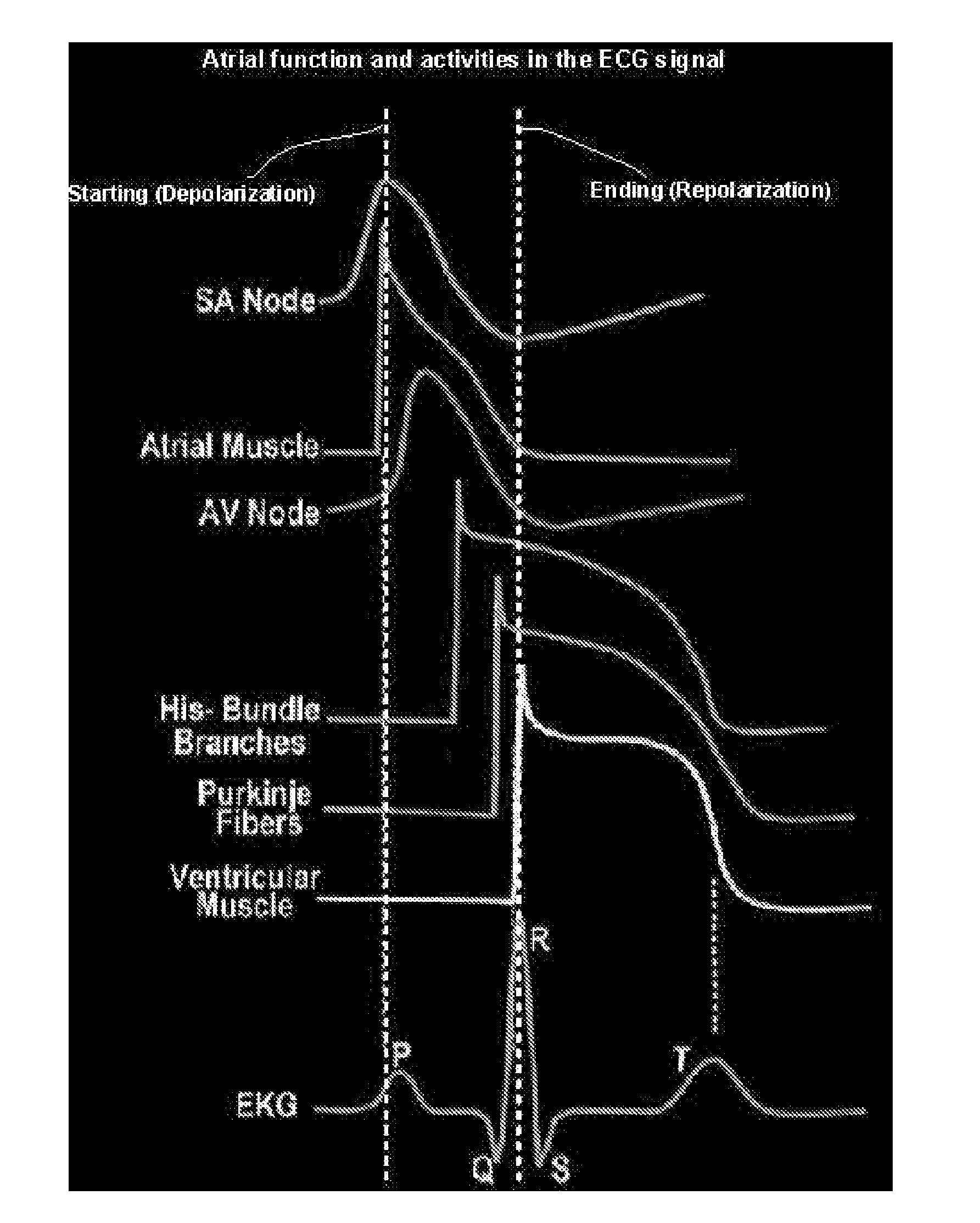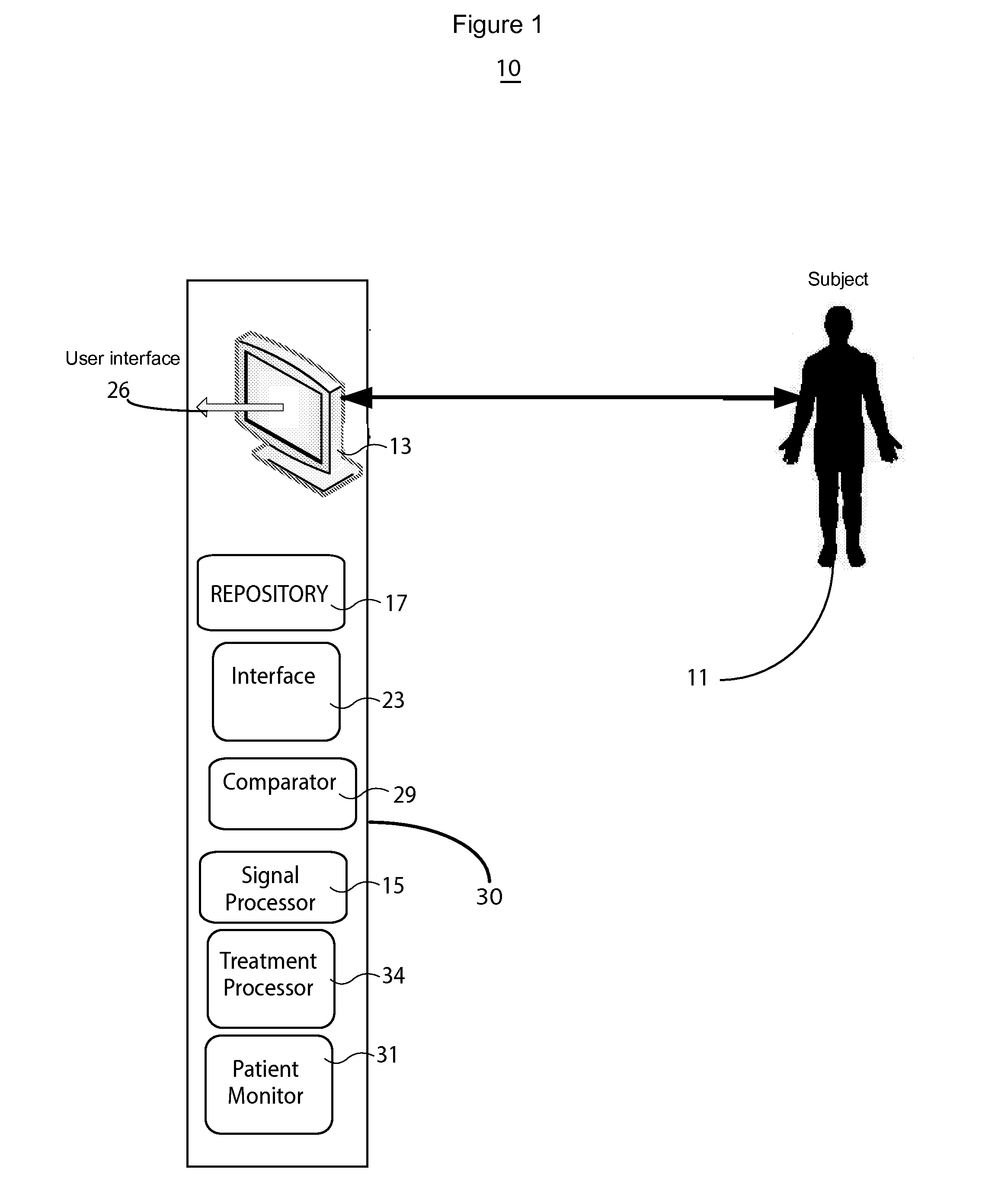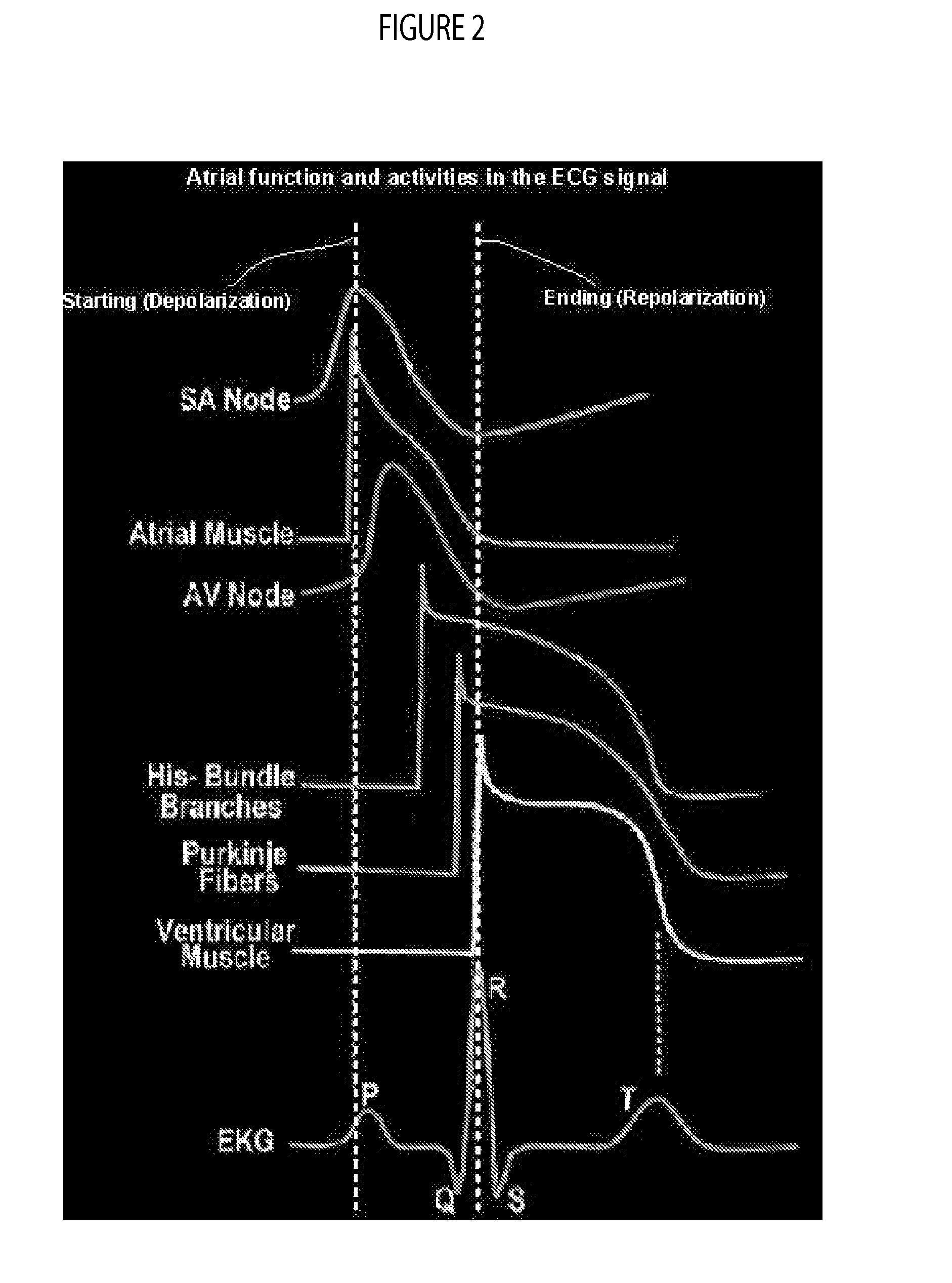Signal Analysis System for Heart Condition Determination
a signal analysis and heart condition technology, applied in the field of system for heart performance characterization and abnormality detection, can solve the problems of difficult treatment of af, irregular feeling, and morbidity thromboembolism and stroke, and achieve the effect of improving the detection of cardiac atrial electrophysiological activities
- Summary
- Abstract
- Description
- Claims
- Application Information
AI Technical Summary
Benefits of technology
Problems solved by technology
Method used
Image
Examples
Embodiment Construction
[0021]A system improves detection of cardiac atrial electrophysiological activities, by analyzing atrial electrophysiological signals (including surface ECG signals and intra-cardiac electrograms) in response to fast and slow atrial rotor activity data extraction within a P wave signal portion, for example. The system quantifies signal waveform changes within atrial electrophysiological signals, especially in atrial multi-rotor component signals to provide an accurate time of event occurrence, atrial arrhythmia type, abnormal excitation rotor location and atrial pathology severity for improved diagnosis, such as of atrial fibrillation arrhythmia. In one embodiment the system employs atrial subcomponent (rotor activity) signal related calculation for identifying atrial tissue and rhythm disorders, differentiating between cardiac arrhythmias, characterizing pathological severity, predicting life-threatening events, and evaluating drug delivery effects. The system is usable for cardiac...
PUM
 Login to View More
Login to View More Abstract
Description
Claims
Application Information
 Login to View More
Login to View More - R&D
- Intellectual Property
- Life Sciences
- Materials
- Tech Scout
- Unparalleled Data Quality
- Higher Quality Content
- 60% Fewer Hallucinations
Browse by: Latest US Patents, China's latest patents, Technical Efficacy Thesaurus, Application Domain, Technology Topic, Popular Technical Reports.
© 2025 PatSnap. All rights reserved.Legal|Privacy policy|Modern Slavery Act Transparency Statement|Sitemap|About US| Contact US: help@patsnap.com



